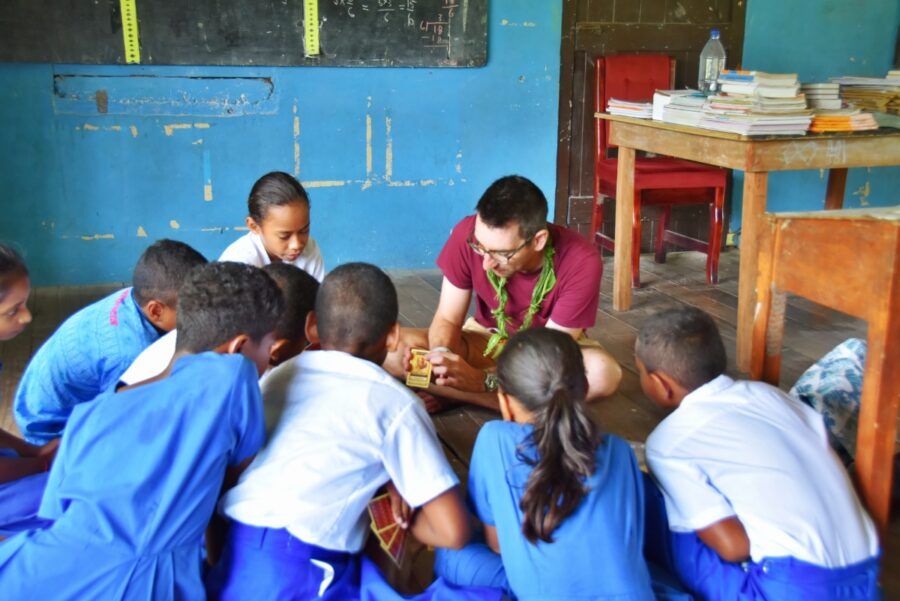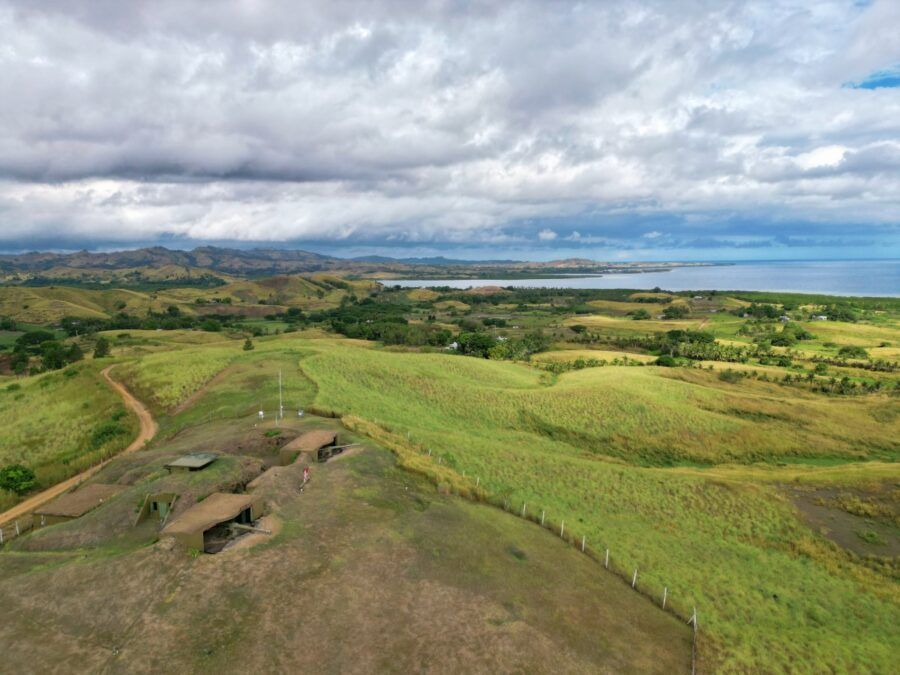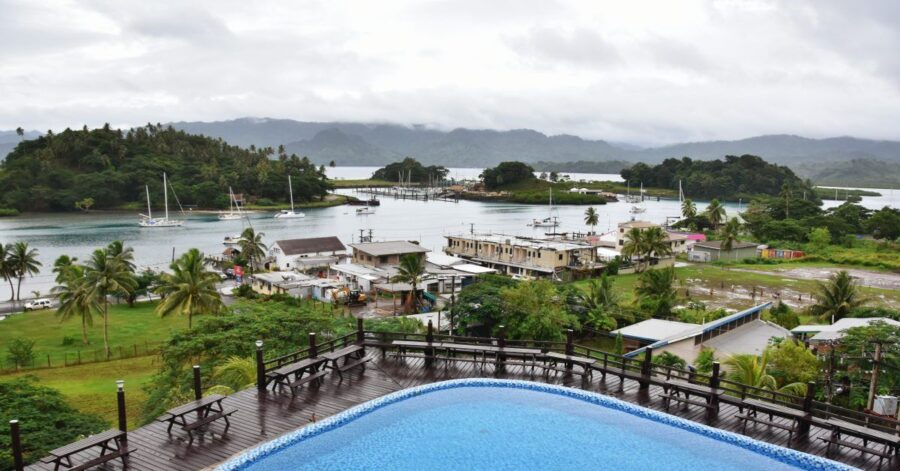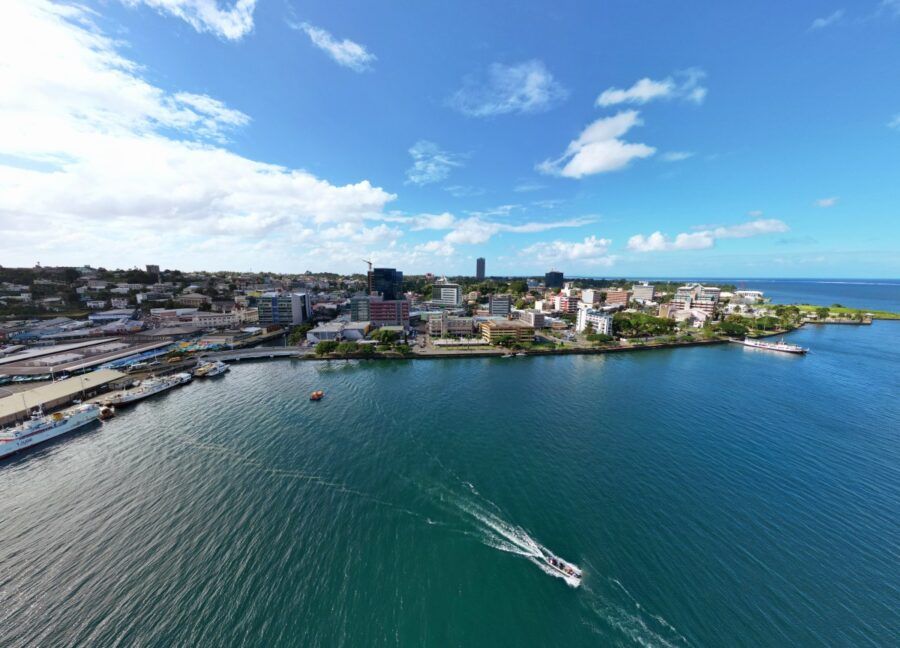Where and How to Experience the Fijian Culture
One of the delights of visiting the islands of Fiji is just how accessible the Fijian culture is. Along with a stunning array of islands come the Fijian people, who have a distinct culture, customs, and traditions that still play out the same way they did centuries ago.
Many of the ceremonies listed in this article are performed throughout the daily lives of the locals and not just for the tourists. So when you’re visiting a village or even chatting to the locals at one of the city markets, you know you’re getting the real deal.
Historical places around Fiji also give a great insight into the culture, so we have been sure to add a couple to the list below, too.
For more advice on Fijian cultural activities, take a look at How to Have a Real Fiji Cultural Experience.
Table of Contents
1. Experience a Slice of Life on a Fijian Village Tour…
Spending time in a traditional Fijian village, whether in the heartland of Viti Levu, Fiji’s main island or on one of the 300+ remote islands, is a must-do experience in Fiji.
The experience typically starts with a kava ceremony, beaming children excited to have visitors, and then that’s where tours start to differ depending on the village; you could be guided through historical sites, treated to cultural song and dance, visit the local school, and/or simply enjoy chatting with the locals.
You can also step off the beaten path and into real village life with a guided “Sigatoka River Cruise“. Led by locals sharing personal stories and traditions, you’ll visit their own communities, join in a kava ceremony, and take part in daily activities.
While visiting authentic Fijian villages, you will need to be aware of a few customs, so get wised up with our Fiji Village Etiquette: What to Do When Visiting a Fijian Village.
Location: All over Fiji! Check out the 10 Best Village Tours in Fiji for recommendations and their locations.
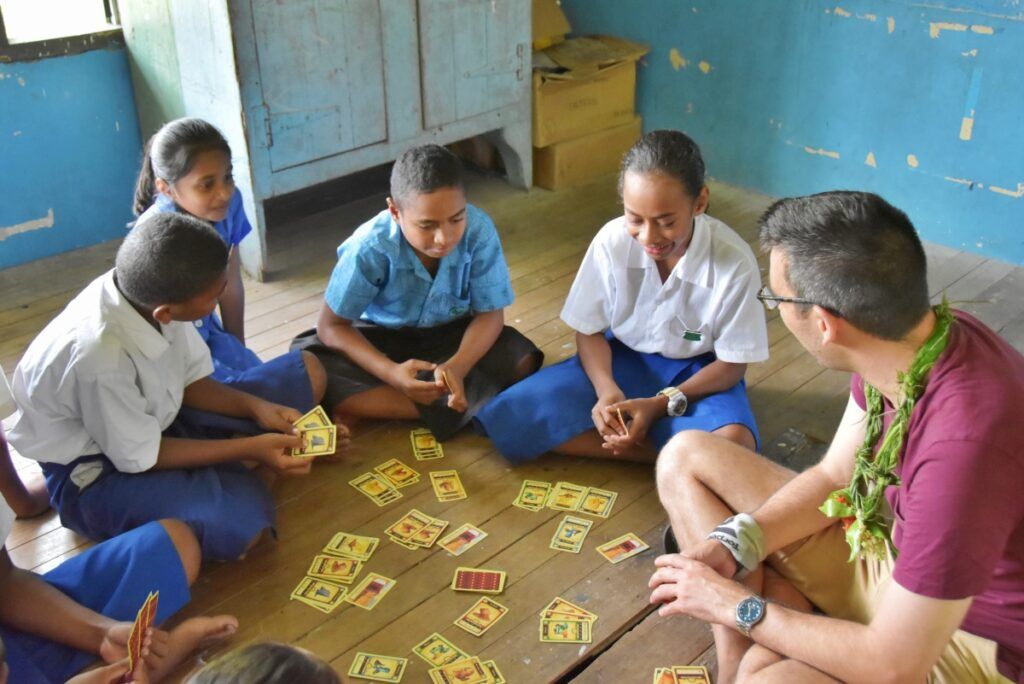 © FijiPocketGuide.com
© FijiPocketGuide.com2. … Or Stay with Locals in a Fijian Village
That’s right, take your cultural immersion a step further by staying in a Fijian village! Many Fijians open their homes up to tourists for free or at an extremely affordable price.
Staying with a Fijian family in a homestay, farmstay, or village stay allows you to see the day-to-day life of Fijians. You’ll get to taste what food they eat, watch real ceremonies in action, play traditional Fijian games, talk to the locals and get a rich cultural experience.
There’s no better way to get a taste of the Fijian culture than by staying in a Fijian home. Staying in a Fijian village isn’t the Hilton, though, so be sure to be prepared by using How to Choose the Best Homestay in Fiji + 5 Essential Tips.
Location: All over Fiji! Check out the 10 Authentic Village Stays in Fiji for recommendations and their locations.
 © FijiPocketGuide.com
© FijiPocketGuide.com3. Join a Kava Ceremony
Made of ground yaqona root, the kava drink is probably the most prominent aspect of the Fijian culture alive today. Although the drink is addictive and numbing and tastes like dirt, the ceremony itself is a great testament to Fijian culture: respect, authenticity, and welcome.
Most resorts organise a kava ceremony on a daily or weekly basis and all steps of the ceremony, although spoken in Fijian, will be explained in English to the crowd. Plus, the kava served to the guest is often heavily diluted with water, making it much more bearable for those not used to the taste, so it’s definitely worth a try!
If you don’t experience one in your resort, you’ll definitely experience a kava ceremony when spending time in a Fijian village (see above).
Location: All over Fiji! Just about every one of the 50 Best Resorts in Fiji and 10 Best Village Tours in Fiji. The only time you might find it challenging to sample kava is if you are solely staying in a town or city, but even then, you’ll find kava bars along with other watering holes.
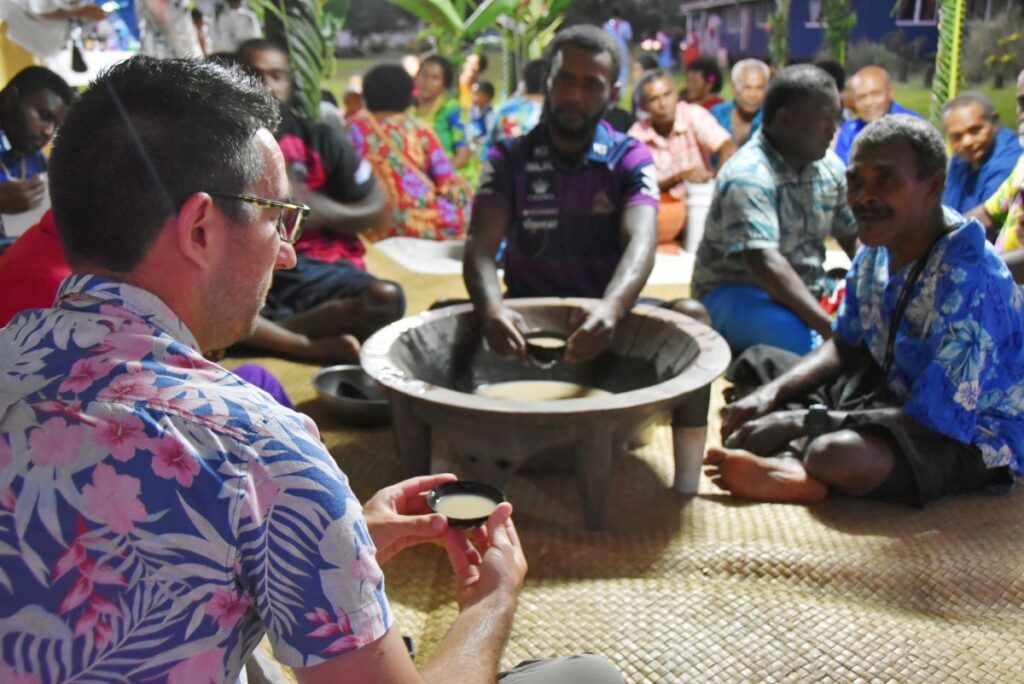 © FijiPocketGuide.com
© FijiPocketGuide.com3. Witness a Firewalking Ceremony
Common to both the Fijian and Hindu cultures, firewalking is a cross-cultural experience in Fiji. On the Fijian side, the men of the Island of Beqa firewalk as a rite of passage.
The process is quite strenuous: abstaining from eating coconut and from sex for ten days before performing. You can see such performances in Beqa and selected spots on the Pacific Harbour, such as Nanuku Resort.
Hindu firewalking, on the other hand, happens at the full moon and is a colourful event that concludes ten days of isolation and a strict diet for the men who perform it.
Location: Pacific Harbour, Viti Levu. Beqa Island, just off the coast of Pacific Harbour.
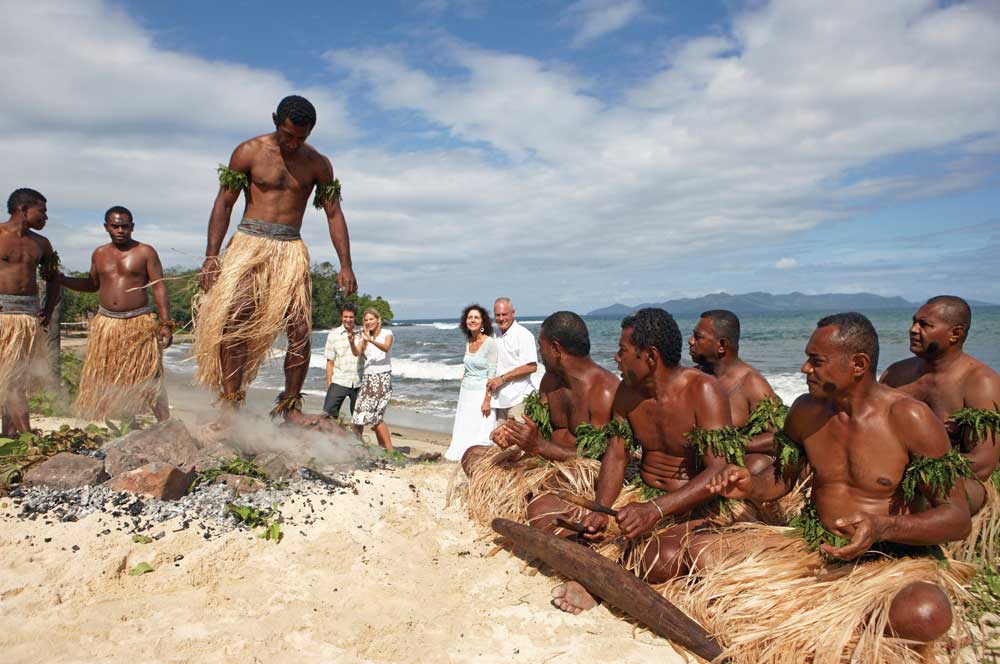 © Chris McLennan - Tourism Fiji
© Chris McLennan - Tourism Fiji4. Dine on a Lovo Feast
Similar to a kalua in Hawaii or a hangi in New Zealand, a lovo is a traditional Polynesian feast cooked underground. A lovo ceremony respects Mother Nature for providing such delicacies and is a welcoming ceremony often organised to welcome important guests visiting remote villages.
The food cooks for hours underground and, in turn, becomes juicy and tender, making for a great culinary experience.
Although it is best experienced in traditional villages, many resorts hire villagers to come and cook lovo for guests on a weekly basis. It’s a foodie must-do!
Location: Vavavi (Nadi, Viti Levu), Paradise Taveuni (Taveuni), Mamacita Mexican Restaurant (Denarau, Viti Levu), Fiji Culture Village (Nadi, Viti Levu), Highlander Twinny Tours (Nadi/Lautoka, Viti Levu), Robinson Crusoe Island (Coral Coast, Viti Levu), Koro Sun Resort (Vanua Levu) and so much more!
 © FijiPocketGuide.com
© FijiPocketGuide.com5. Be Captivated by a Meke Performance
Meke performances are probably the ceremony that will teach you the most about the Fijian legends and myths. Between songs and fire dancing, it celebrates the local legends and tells stories of yesteryears in the most Fijian way.
With a mix of dance styles like the meke wesi while sitting on the floor or meke thali (fan dance) or the more energetic dancing on the men with war clubs, a Fijian cultural performance makes for a genuine and memorable evening that is poised to be the highlight of your trip.
For this reason, almost all resorts and hotels either organise a ceremony or transport guests to one multiple times per week.
Location: VOU Hub (a contemporary take on Fijian dancing, Nadi, Viti Levu), Mamacita Mexican Restaurant (Denarau, Viti Levu), Fiji Culture Village (Nadi, Viti Levu), Gecko’s Resort (Coral Coast, Viti Levu), Paradise Taveuni (Taveuni), Robinson Crusoe Island (Coral Coast, Viti Levu), Koro Sun Resort (Vanua Levu), Nukubalavu Village (Savusavu, Vanua Levu) and so much more!
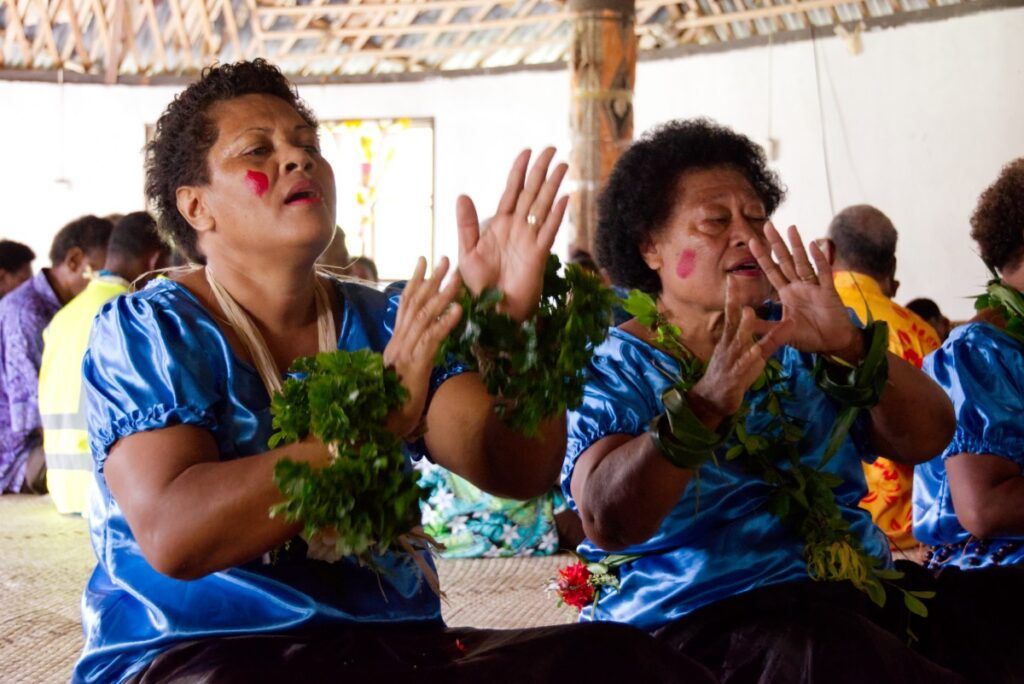 © FijiPocketGuide.com
© FijiPocketGuide.com6. Visit the Tomb of Udre Udre and Many More Historical Sites
Udre Udre’s Grave is a humbling sight and a stark reminder of the violent roots of the Fijian culture. Surrounded by 800 stones representing the 800 victims of Udre Udre (pronounced “Un-dre”), the tomb commemorates one of the most violent tribal chiefs that the country ever had.
Udre Udre is said to have killed and eaten over 800 people during his reign at the peak of the Fijian cannibal period. Believe it or not, this “achievement” awarded him a postmortem Guinness World Record in 2003.
Explore the history of the islands in greater depth with the 20 Best Historical Sites in Fiji.
Location: Rakiraki, Suncoast, Viti Levu.
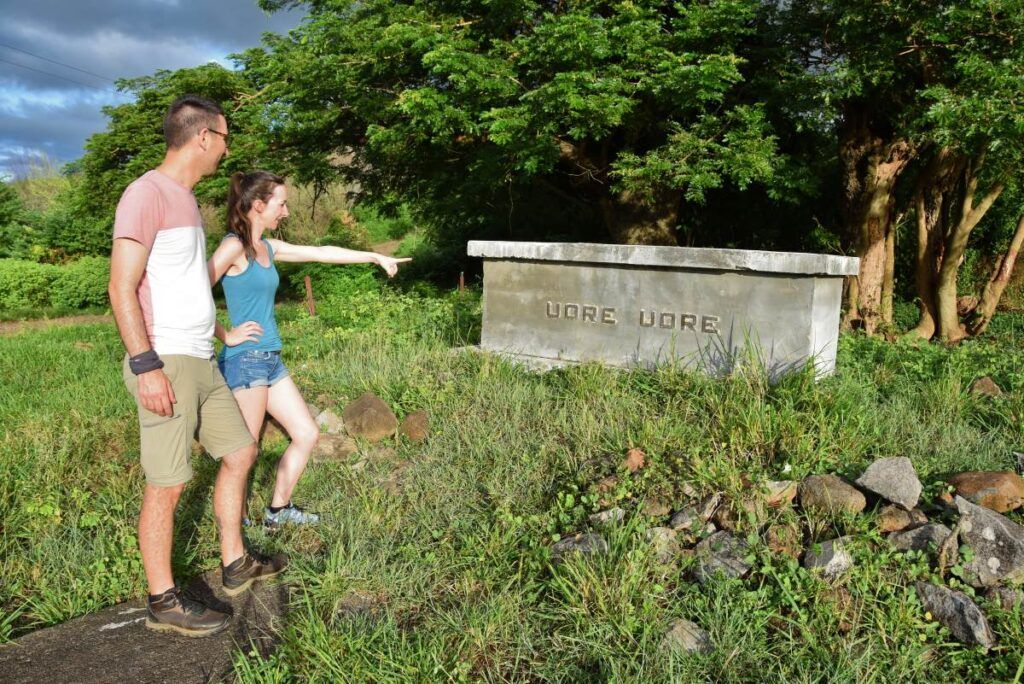 © FijiPocketGuide.com
© FijiPocketGuide.com7. Delve into the Naihehe or Nakoroloaloa Caves
Tours of the stunning caves in central Viti Levu, Fiji’s main island, will take you through mesmerising landscapes, great cave formations and a few gnarly passages. On top of that, the caves are filled with history from its cannibal-inhabitant past to today’s conservation effort, without forgetting the authentic nearby village.
The tour with Off-Road Cave Safari or Coastal Inland Tours is a brilliant way to experience Naihehe Cave – see the 5 Best Off-Road, 4WD & Quad Biking Tours in Fiji for ideas.
Otherwise, for those on a self-drive adventure on the Suncoast, check out Nakoroloaloa Caves in the village of Wailotua, where locals from the village will share legends of the cave’s “Snake God”.
Location: Naihehe Cave – Tours depart from Tappoo, Sigatoka, Coral Coast, Viti Levu. Transfers are available from Coral Coast resorts. Nakoroloaloa Cave – Kings Road, Wailotua, Suncoast, Viti Levu.
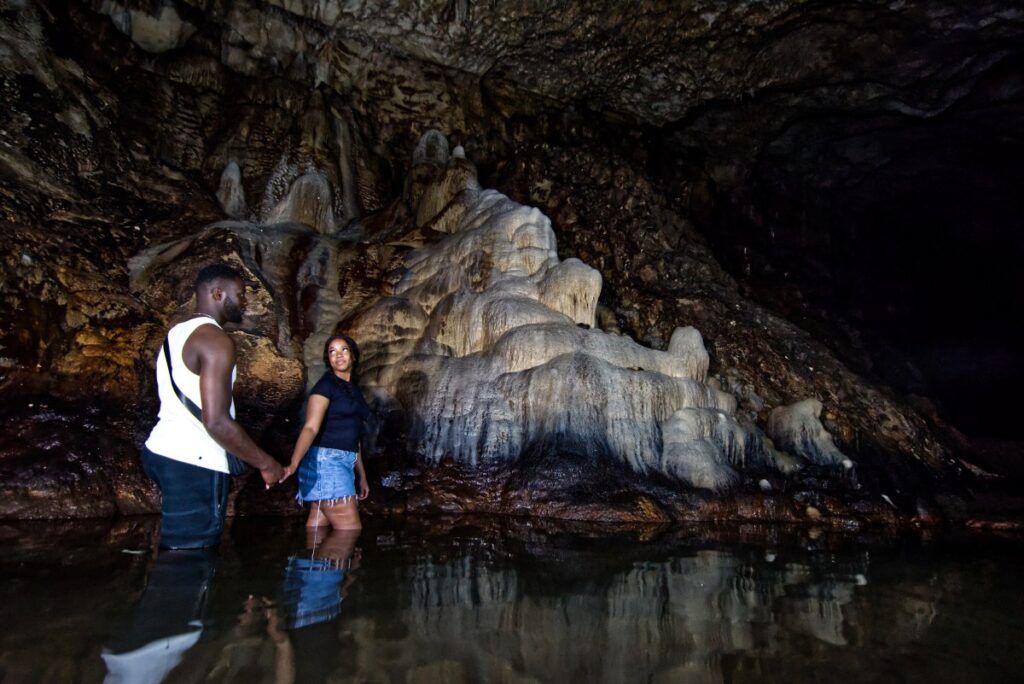 © FijiPocketGuide.com
© FijiPocketGuide.com8. Visit the Sacred Cobra Rock of Labasa or Sri Siva Subramaniya Swami Temple in Nadi
A rock that grows and cures the sick?! There is much to learn about the Indo-Fijian culture and legends, including this one. If visiting the island of Vanua Levu, the rock that can be seen in the Naag Mandir Temple is surrounded by a plethora of offerings, each one more vivid than the last.
Another popular Hindu attraction in Fiji is the Sri Siva Subramaniya Swami Temple, an extravagant temple at the southern end of Nadi Town.
Learn more about the Indo-Fijian culture in our guide, Who are the People of Fiji? Ethnicity, Population & More.
Location: Sacred Cobra Rock – Nagigi, Labasa, Vanua Levu. Sri Siva Subramaniya Swami Temple – Queens Road, Nadi Town, Nadi, Viti Levu.
 © FijiPocketGuide.com
© FijiPocketGuide.com9. Soak in the Springs and Fijian Culture at the Sebato Hot Springs
Run by a local village on the back roads of Nadi, the Sebato Hot Springs shows you exactly why the Fijian culture and relaxing come hand-in-hand. While the main attractions of the hot springs are the natural hot pools and mud pools, the experience just feels “Fijian”.
You’ll experience the welcoming Fijian hospitality from the family who owns the pools, have the opportunity to taste authentic Fijian food while sitting on the floor (the Fijian way!) with the locals, get a Fijian massage from their massage parlour, and buy locally made crafts from stalls set up by the local villagers.
Location: Wailoko Road, Sabeto, Nadi, Viti Levu. Either drive, take a taxi or take one of the many scheduled tours visiting the gardens, including Uniquely Fiji, Valentine Tours Fiji and Iconic Tours Fiji.
 © FijiPocketGuide.com
© FijiPocketGuide.com10. Visit the Local Markets
Craft markets are a great place to seek true Fijian art if you are after authentic gifts and colourful souvenirs. The craft culture of the islands is alive and well even in the day and age of the “Made in China”, from ingenious jewellery boxes to intricately woven patterns, without forgetting the impressive skills of the woodcarvers.
You will be amazed by what the stalls of the local craft markets have to offer. On top of all that, visiting a craft market is a great chance to talk with friendly local craftsmen and women.
Check out some of the iconic crafts in the 20 Best Souvenirs & Gifts from Fiji.
Location: All over Fiji! See the 10 Best Markets in Fiji for recommendations and their locations!
 © FijiPocketGuide.com
© FijiPocketGuide.com10 More Cultural Activities in Fiji
We’ve already highlighted the top 10 cultural experiences in Fiji, but here are 10 more immersive activities to enrich your stay in this vibrant Pacific nation.
- Basket Weaving & Coconut Leaf Weaving – Learn the traditional Fijian craft of weaving baskets, mats, and other items using coconut leaves. This is often included as a wet-weather activity at resorts.
- Mud Crab Catching – At Robinson Crusoe Island, Nanuku Resort, Savasi Island Resort and more, you can participate in traditional mud crab catching, a hands-on cultural experience often combined with cooking classes.
- Turtle Calling Ceremony – In certain Fijian villages like those on Koro Island and Kadavu, you can witness the mystical turtle calling ceremony, where the villagers summon turtles from the sea.
- Church Service – Join a Sunday church service in a Fijian village to experience their deeply religious community life, often filled with singing and a strong sense of communal worship.
- Herbal Medicine Walks – Learn about traditional Fijian bush medicine by walking through the forests with local guides who explain the uses of various plants. Experience at Bobby’s Farm (Taveuni), Lalati Resort & Spa (Beqa Island), Tokoriki Island Resort (Mamanucas), Turtle Island and Navutu Stars (Yasawas).
- Pottery Making – Learn about and engage in traditional Fijian pottery techniques that have been passed down for generations. These are often offered in cultural tours on the Coral Coast or visit the town hall of Lawai Village independently.
- Traditional Cooking Classes – Learn to cook Fijian dishes using traditional methods such as the lovo, an underground oven where food is slow-cooked with Vavavi (Nadi) or during the “Warrior’s Cooking Class” at Nanuku Resort (Pacific Harbour).
- Handline Fishing – Traditional way of fishing and affordable, mostly available at resorts in the Yasawa Islands and Vanua Levu.
- Festivals and Events – Particularly good for experiencing Indo-Fijian events like Holi and Diwali.
- Learn the Local Language – This is a great way to open up locals for conversations for an immersive experience – see the Guide to the Fijian Language.
These cultural activities offer a deeper connection with Fiji’s rich heritage and traditions, enhancing your island experience beyond the beautiful beaches and resorts.
![10 Best Cultural Activities in Fiji 🌺 [2025]](https://fijipocketguide.com/wp-content/uploads/2019/01/Village-Visit-Local-CREDIT-Fiji-Pocket-Guide--1024x684.jpg) © FijiPocketGuide.com
© FijiPocketGuide.comMore Ways to Experience the Fijian Culture
That’s it for the ways to experience the Fijian culture. For more cultural insights, take a look at the following:
- 10 Fijian Words You Need to Know When Visiting Fiji
- 5 Fascinating Museums in Fiji
- What Does Fiji Time Mean? (& What You Need to Know About It)
You might like to check out The Guide to the Fiji Culture for Travellers for even more tips!
Sources:
The information in this guide has been compiled from our extensive research, travel and experiences across Fiji and the South Pacific, accumulated over more than a decade of numerous visits to each destination. Additional sources for this guide include the following:
- Tourism Fiji (General travel advice - Updated [2025])
- Fiji Hotel and Tourism Association (Tourism trade association - Updated [2025])
- SPTO (Pacific tourism advice - Updated [2025])
- Ministry of Tourism and Civil Aviation (Tourism statistics - Updated [2025])
- Land Transport Authority (Road safety advice - Updated [2025])
- Fiji Immigration (Visa and immigration advice - Updated [2025])
- Fiji Revenue & Customs Service (Customs and visitor taxes - Updated [2025])
- Biosecurity Authority of Fiji (Biosecurity advice - Updated [2025])
- Fiji Meteorological Service (Weather forecast and warnings - Updated [2025])
- Fiji Bureau of Statistics (Statistics and travel data - Updated [2025])
- Safe Travel (New Zealand travel advisory for Fiji - Updated [2025])
- Smart Traveller (Australia travel advisory for Fiji - Updated [2025])
- Travel.State.Gov (U.S. travel advisory for Fiji - Updated [2025])
Our editorial standards: At Fiji Pocket Guide, we uphold strict editorial standards to ensure accurate and quality content.

About The Author
Laura (Lora) S.
This article was reviewed and published by Laura, editor in chief and co-founder of Fiji Pocket Guide. Since arriving solo in the South Pacific over 10 years ago with nothing but a backpack and a background in journalism, her mission has been to show the world how easy (and awesome) it is to explore a paradise such as Fiji. She knows the islands inside-out and loves sharing tips on how best to experience Fiji’s must-dos and hidden gems. Laura is also editor of several other South Pacific travel guides.




